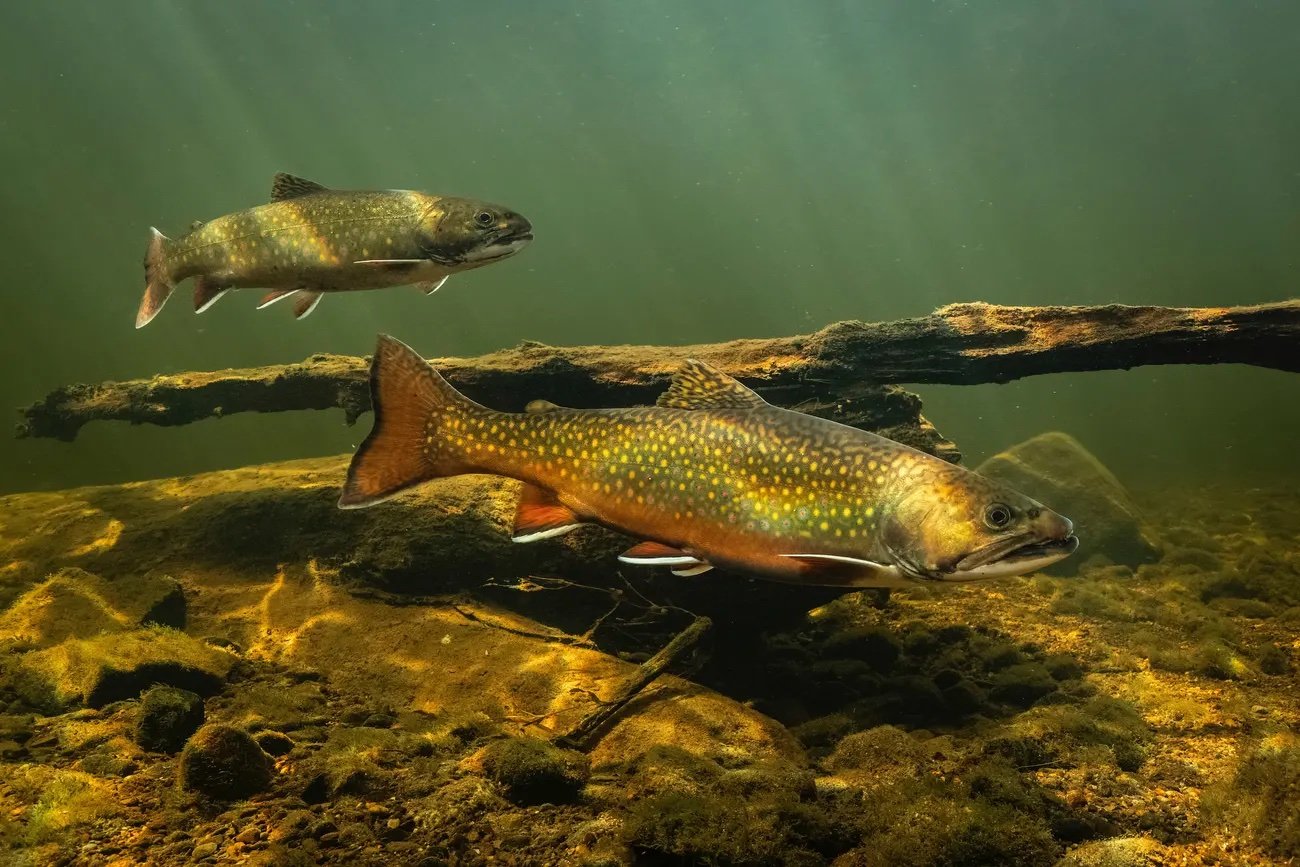bioGraphic:
Nick Hawkins/NPL
“How this beautiful interloper from eastern North America got to this place is unclear, beyond that it was part of a human-aided diaspora that loosed brook trout into high-altitude lakes and creeks across the West, from northwest Washington to southern New Mexico. There, brookies’ voracious appetites and rapid sexual maturation have spelled trouble not only for native trout like bull, rainbow, California golden, and cutthroat, which they outcompete, but also for a host of other aquatic organisms, including frogs and salamanders.
As Miller and Field shock and scoop their way upcreek, though, a pattern that could be the key to Leandro Creek’s salvation becomes apparent. Brook trout may greatly outnumber the Rio Grande cutthroat here, in some stretches by more than five to one, but nearly every single one of the brookies the crew captures is male.
That’s because many are a lab-produced variety known as “Trojan” brook trout. They are unique in that they carry not one, but two copies of the Y chromosome that codes maleness; they have no X chromosome to pass on. Unlike many creatures, including humans, fish can survive without an X, and seem unimpaired by the lack. And since 2018, Miller, the lead researcher on the project, and his predecessors have been carrying out a bold new experiment, stocking various streams across the Vermejo reserve with this strain in an attempt to tilt the brook trout sex ratio so far male that eventually the population will stop breeding and blink out on its own. Similar efforts are also underway in a handful of creeks in Idaho, Washington, and Oregon, and Nevada plans to embark on its own stocking program this summer. ”


